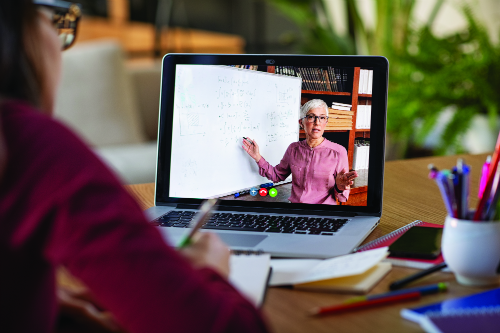In the dynamic expanse of educational methodologies, distance learning has carved out a pivotal role, emerging as a beacon of innovation and inclusivity. This educational approach transcends geographical boundaries and temporal constraints, harnessing technology’s power to forge connections between educators and learners, irrespective of their physical locations. The genesis of distance learning was marked by an aspiration to serve nontraditional learners – including those engaged in full-time employment, serving in the military, or residing in locales where access to conventional educational institutions was a challenge. Yet, the narrative of distance learning has evolved significantly, heralding a new era of educational accessibility and flexibility.
The progression of distance learning is a testament to its growing acceptance and its capacity to adapt to the evolving educational landscape. A notable milestone in this journey was observed in the autumn of 2009 when over 5.6 million university students in the United States enrolled in at least one online course – a dramatic leap from 1.6 million in 2002. The advent of the COVID-19 pandemic in early 2020 catalyzed a global shift towards distance learning, with students and educators worldwide navigating the challenges and opportunities presented by remote education. In this period of unprecedented change, technologies such as videoconferencing software, exemplified by Zoom’s meteoric rise, became instrumental in sustaining educational engagement and continuity.
The global landscape of distance learning is dotted with pioneering institutions that have embraced and advanced this mode of education. The University of Phoenix stands as a luminary in this regard, having embarked on its journey in 1976 to become a vanguard of distance learning, eventually growing into the world’s largest private educational institution in terms of enrollment. This institution, alongside others like the Indira Gandhi National Open University and the China Central Radio and TV University, highlights the global embrace of distance learning, showcasing its potential to democratize access to education for millions of learners worldwide.
The allure of distance learning lies not only in its ability to transcend physical barriers but also in its multifaceted benefits. It offers educational institutions the flexibility to expand their reach without the necessity of augmenting physical infrastructure. Learners, on the other hand, gain the invaluable ability to tailor their educational journey to fit their personal and professional lives, thereby fostering a learning culture that is both inclusive and adaptable. Moreover, distance learning has enabled the provision of niche courses and specialized subjects to a broader audience, thereby enriching the educational ecosystem with diversity and depth.
As we stand at the cusp of a new epoch in education, distance learning emerges as a critical element in the global educational framework, promising to redefine the paradigms of learning and teaching. It not only champions the cause of universal access to education but also heralds a future where learning is unbound by the traditional constraints of space and time. The ongoing evolution of distance learning technologies and methodologies signals a future where education is more personalized, accessible, and aligned with the individual needs of learners across the globe.
In essence, distance learning is not merely an alternative to traditional education; it is a clarion call for a more flexible, inclusive, and responsive educational system. Its trajectory from a supplementary form of education to a fundamental component of the global educational architecture underscores its transformative potential. As we navigate the complexities of the 21st century, distance learning stands as a testament to human ingenuity and a harbinger of a more equitable and accessible educational future for all.
Also, read more at “kiendel.com“
